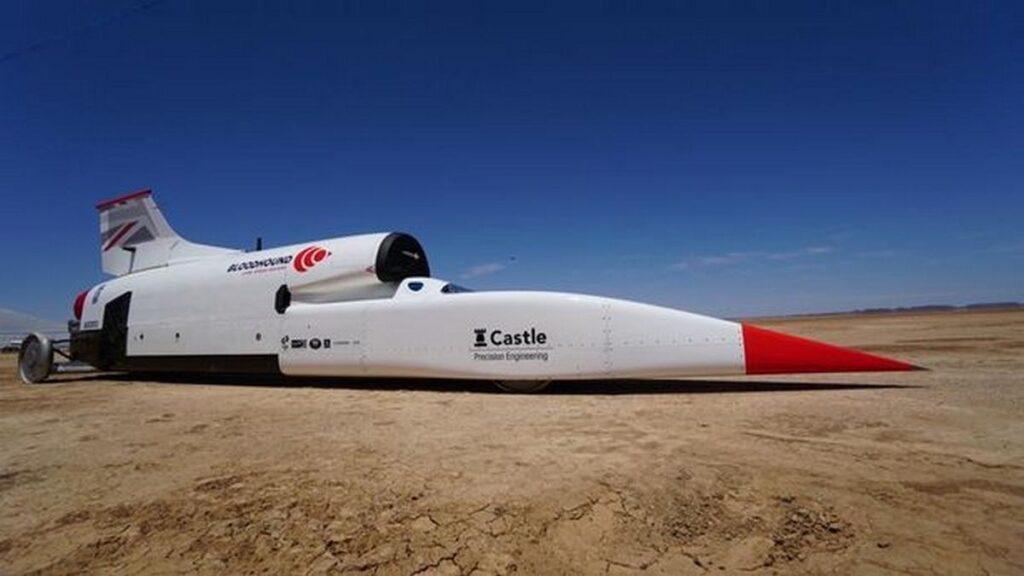A team of Microsoft Internet-of-Things engineers participated in an attempt to break world speed records at a remote site in the Oregon desert.
Motorsports athlete Jessi Combs reached 477.59 mph last week driving the North American Eagle, a sleek, 7-ton race car that made five runs over five days in the Alvord Desert in southeast Oregon. She failed to break the world women’s speed record of 512 miles per hour, set in 1976, though she did set a personal best.
“We go back to the drawing board,” Combs said in a statement, adding that she remains determined to break the record. Problems with hydraulics in the steering system confounded her efforts, and given that 40 people are required to crew and prep the vehicle, it could be a year before further attempts are made.
ed_jessi_cockpit__credit-keith-zanghi
Eagle owner Ed Shadle and driver Jessi Combs.
Eagle owner Ed Shadle and his volunteer crew will continue to work toward driving the Eagle at 800 miles per hour, a goal he’s had since he and friend Keith Zanghi salvaged an old Lockheed jet fighter in 1998, they said. The Eagle project transformed a junked F-104 Starfighter into an aerodynamic marvel capable of generating 42,500 horsepower. The current land speed record is 763.035 miles per hour, set by a British team in October 1997.
Microsoft gave fans a live window on the Eagle’s performance, providing real-time streamed monitoring of G-forces, speed and acceleration during the car’s runs. Gathering that data isn’t easy when its source is traveling at great speed across barren land, devoid of cell towers, electricity and internet.
With Windows 10 IoT Core, a specialized operating system, Microsoft software engineer Matt Long and Microsoft cloud architect Mark Nichols built a small sensor device that sent telemetry and received messages in real time from the cockpit. They built mobile apps with the Xamarin development environment, transmitted data with a satellite, captured video with two drones and streamed video with Azure Media Services.
fuselage__credit-keith-zanghi
The fuselage of the North American Eagle.
The vehicle also uses Azure and Windows 10 to help analyze millions of data points on downforce, load, speed and other measures from each test run to improve the next. That’s important information when exceeding the speed of sound, which risks creating a shock wave that can liquefy the ground under the car or uplift that sends the car into flight.
The vehicle transmits sensor data via Wi-Fi from its nosecone to a transceiver on a 400-foot-high tower, giving it line-of-sight coverage across the car’s run path. A 507-pound satellite dish was also put into play.
The IoT system “performed flawlessly, getting us half-second snapshots of telemetry and broadcasting to a global audience,” Long said in interview yesterday. “Jessi’s first run had an audience of about 4,500 viewers. She even received messages from well-wishers in Russia, which were recorded. And we sent over 500 million data points of telemetry.”

jessi_mug__credit-eric-wittler
Driver Jessi Combs.
Long and Nichols were also the brains behind The Pegasus Mission, a research project that recently streamed live telemetry from the stratosphere, showcasing real-time IoT in extreme conditions.
Some cool facts about the North American Eagle:
Each wheel is milled from a billet of solid aluminum, withstands speeds of over 800 mph and cost $20,000.
It uses a J-79 jet engine that consumes 90 gallons of fuel per minute.
It weighs over 7 tons and measures 56 feet — longer than three cars parked end to end.
